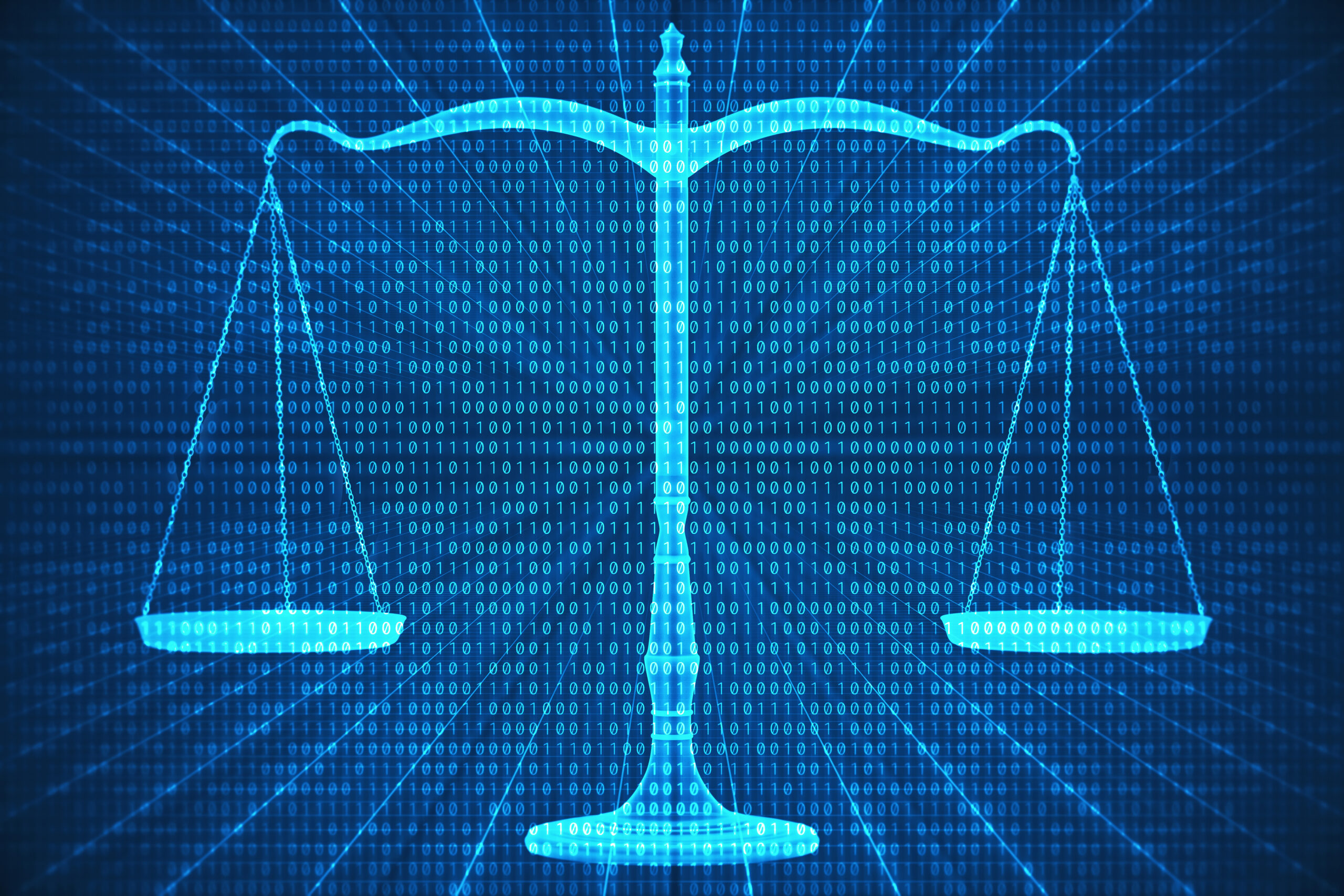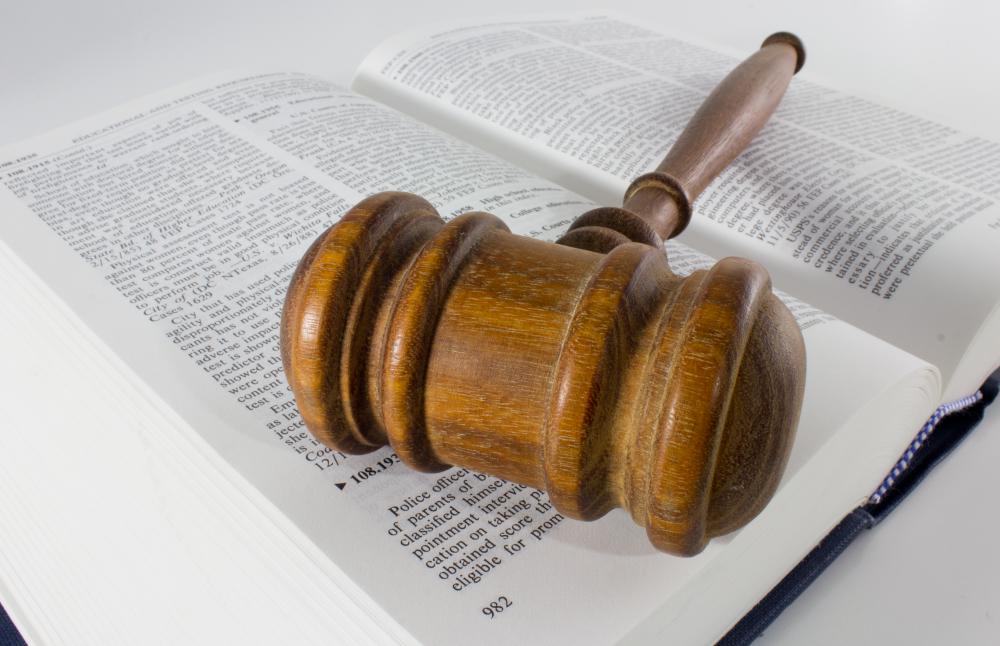This Sidley Update addresses the following recent developments and court decisions involving e-discovery issues:
1. an order from the U.S. District Court for the Northern District of California requiring the Defendant to provide, at the outset of a multidistrict proceeding, information about the approximately 15,700 recipients of its litigation hold notices and the sources of custodial and noncustodial electronically stored information (ESI), pursuant to Federal Rule of Civil Procedure 26 and the Northern District of California Rule 26(f) Checklist regarding ESI
2. a decision from the U.S. District Court for the Northern District of Illinois finding that “discovery on discovery” was warranted regarding Plaintiff’s document preservation in light of lost ESI and requiring Plaintiff to produce documents regarding when it reasonably anticipated litigation, including its retention letter with counsel and a privilege log of communications with counsel related to potential claims against the Defendant
3. a ruling from the U.S. District Court for the Northern District of California applying proportionality standards and declining to compel a law firm to produce native time entry data and associated metadata in connection with a fee application
4. an opinion from the U.S. District Court for the Southern District of Texas refusing to exclude supplements to the Plaintiff’s initial disclosures served after the close of discovery, finding that the late disclosures were “harmless” under Rule 37
1. An order from the U.S. District Court for the Northern District of California requiring the Defendant to provide, at the outset of a multidistrict proceeding, information about the approximately 15,700 recipients of its litigation hold notices and the sources of custodial and noncustodial ESI, pursuant to Federal Rule of Civil Procedure 26 and the Northern District of California Rule 26(f) Checklist regarding ESI.
In Doe LS 340 v. Uber Technologies, Inc., — F. Supp. 3d —-, 2024 WL 107929 (N.D. Cal. Jan. 29, 2024), U.S. Magistrate Judge Lisa J. Cisneros addressed the standards under Rule 26 and local practice for the initial disclosure of information regarding document preservation efforts and ESI sources.
Plaintiffs in this multidistrict litigation (MDL) alleged that Uber failed to implement appropriate safety precautions to protect passengers and that, as a result, Plaintiffs suffered sexual assault or harassment by drivers. Id. at *1. Two years prior to the order initiating the MDL, a California state court had ordered a coordinated proceeding under California law based on substantially similar allegations.
After consolidation in the federal MDL proceeding, the court issued a pretrial order regarding document preservation as an “interim measure pending the parties’ proposal of a more tailored order concerning the preservation of relevant information” and a way to “ensure the preservation of all documents and ESI that may be discoverable in relation to any of the issues in this litigation.” Id. at *2. The parties thereafter conferred to discuss the scope of Uber’s efforts to preserve evidence, which included the number of employees who were subject to a litigation hold and the fact that 10,200 of its employees were subject to legal holds that did not relate to this litigation. Uber declined to disclose the names of the employees subject to a litigation hold or the dates when the litigation holds were issued to each employee.
In their motion, Plaintiffs sought an order compelling Uber to produce details surrounding its litigation holds, including the names, job titles, and dates of employment of the recipients of the hold notices, the dates of issue, and what litigation or claim the holds related to, as well as the ESI sources Uber preserved and when it preserved them, when such ESI sources were used, what they were used for, the general types of information they housed, and which employees used or had access to these sources. Plaintiffs also sought an order requiring Uber to suspend its companywide document destruction policies for a period of time to allow Plaintiffs to determine what, if any, relevant ESI had been destroyed.
Magistrate Judge Cisneros first addressed the legal standards related to the disclosure of document preservation efforts. She explained that “[a]s soon as a potential claim is identified, a litigant is under a duty to preserve evidence which it knows or reasonably should know is relevant to the action.” She further explained that “once a party reasonably anticipates litigation, it must suspend its routine document retention/destruction policy and put in place a ‘litigation hold’ to ensure the preservation of relevant documents.” The duty to preserve evidence “includes an obligation to identify, locate, and maintain information that is relevant to specific, predictable, and identifiable litigation.” Id. at *3. However, she noted that organizations “are not generally required to preserve every email or electronic document” because “[t]o require such broad preservation would cripple organizations that almost always are involved in litigation, and make discovery even more costly and time-consuming.” Id. (quoting The Sedona Principles, Third Edition: Best Practices, Recommendations & Principles for Addressing Electronic Document Production (The Sedona Principles), 19 Sedona Conf. J. 1, 95 (2018)).
Turning to the merits of Plaintiffs’ motion, Magistrate Judge Cisneros first held that Uber was required to provide Plaintiffs with basic information concerning its litigation holds. Id. at *3-4. Plaintiffs argued that Uber was required to provide basic facts surrounding its litigation holds, such as the names, job titles, and dates of employment of the recipients of the hold notices, the dates of issue, and what litigation or claim the holds relate to, which information did not implicate any privilege and was contemplated by the federal and local rules, as well as the Northern District of California Rule 26(f) Checklist regarding ESI. In response, Uber argued that the Rule 26(f) Checklist required only provision of “the names and/or general job titles or descriptions of custodians for whom ESI will be preserved,” and the more detailed information regarding its litigation holds sought by Plaintiffs was “plainly privileged,” as it concerned matters contained within the litigation holds themselves.
Magistrate Judge Cisneros rejected Uber’s position, finding that “the basic details surrounding the litigation hold” are not protected by the attorney-client privilege or the work product doctrine. She noted that while Plaintiffs were not “entitled to probe into what exactly” Uber’s employees were told by its attorneys through the litigation holds, Plaintiffs were “certainly entitled to know” what Uber’s employees are doing “with respect to collecting and preserving ESI.” She further explained that the focus of this inquiry “can and should be on the facts of what Uber’s document retention and collection policies are, including the kinds and categories of ESI preserved, rather than how the litigation holds were worded or how they describe the legal issues in the action.”
Magistrate Judge Cisneros also ordered Uber to include in its disclosure whether the litigation hold related to a case or complaint involving allegations of sexual assault or sexual harassment, because such allegations had the potential to put Uber on notice of its duty to preserve potentially relevant evidence, and without such information it would not possible to tell whether Uber’s litigation holds from other actions related to the fulfillment of its preservation obligations in this MDL.
Magistrate Judge Cisneros next addressed Plaintiffs’ argument that Uber was required to disclose information about the ESI sources, including noncustodial sources, it had preserved and when it preserved them. Id. at *5. She noted that the disclosure of information indicating noncustodial sources of ESI is expected in the ordinary course of discovery and that courts “routinely hold that parties are entitled to know what kinds and categories of ESI a party has collected and preserved and what specific actions were undertaken to that end.” Magistrate Judge Cisneros added that the Sedona Principles contemplated that parties should discuss and consider noncustodial as well as custodial sources of relevant ESI and that the Rule 26(f) Checklist calls for the parties to identify and discuss a “list of systems, if any, that contain ESI not associated with individual custodians,” such as enterprise databases.
Accordingly, Magistrate Judge Cisneros ordered Uber to disclose information about the ESI sources it had preserved, specifically what sources of ESI it preserved, when each source was preserved, when each ESI source was used, what each source was used for, and the general types of information housed or contained in each source. She declined to order Uber to provide information about which employees used or had access to each source because this would be burdensome in light of the number of current and former employees at Uber, but she noted that Plaintiffs could inquire about that topic in a deposition.
Finally, Magistrate Judge Cisneros addressed Plaintiffs’ request that Uber be ordered to suspend its automatic document destruction policies companywide until the parties could meet and confer to work on a more tailored preservation order. Citing to the Sedona Principles, she noted that litigants are not generally required to preserve all electronic records, and the principles of proportionality guide the scope of a party’s duty to preserve potentially relevant evidence. Uber argued that such an order would be overbroad and without a legal basis because Uber conducts business that is unrelated to its rideshare application.
Magistrate Judge Cisneros agreed that Plaintiffs’ request was “exceedingly broad and generally disfavored” and declined to order Uber to suspend its automatic document destruction policies companywide. She noted that Uber had already “suspended automatic deletion of emails and electronic data for thousands of employee custodians.” Accordingly, she found that the record did not support that companywide suspension of the automatic deletion policy would be proportionate to the needs of the case.
2. A decision from the U.S. District Court for the Northern District of Illinois finding that “discovery on discovery” was warranted regarding Plaintiff’s document preservation in light of lost ESI and requiring Plaintiff to produce documents regarding when it reasonably anticipated litigation, including its retention letter with counsel and a privilege log of communications with counsel related to potential claims against the Defendant.
In Linet Americas, Inc. v. Hill-Rom Holdings, Inc., 2023 WL 9119836 (N.D. Ill. Dec. 1, 2023), U.S. Magistrate Judge Jeffrey T. Gilbert addressed the standards for “discovery on discovery” related to Plaintiff’s document retention policies and practices and its retention of counsel for purposes of filing a lawsuit.
Plaintiff in this antitrust suit alleged that Defendant, a medical technologies supplier, participated in a scheme to force hospital systems into exclusive supply agreements. During discovery, it came to light that ESI from four of Plaintiff’s former employees was discarded or destroyed after those employees stopped working for Plaintiff. Id. at *1. Defendant sought discovery from Plaintiff designed to determine when Plaintiff reasonably anticipated litigation with Defendants, which in Defendant’s view would be relevant to when Plaintiff may have had a duty to preserve the ESI from those four employees.
Plaintiff claimed that the four custodians at issue left their employment in August 2018, October 2019, and December 2019, and that Plaintiff discarded their ESI either in accordance with what it characterized as its regular business practice within three months of those employees leaving the company or at least by April 2020 when it transferred only active accounts to the company’s new cloud-based email system. Plaintiff retained the law firm that ultimately filed the litigation in January 2020. In response to Plaintiff’s arguments, Defendant claimed that the disposal of the former employees’ ESI “coincident with the company’s retention of the counsel handling this case” provided an adequate factual basis for the limited discovery Defendant sought regarding whether the ESI should have been retained “in case litigation materialized.”
Magistrate Judge Gilbert noted that Defendant’s requests could be characterized as “discovery on discovery” but found that the requests were not improper under the circumstances of the case because “courts acknowledge that ‘discovery about discovery’ can be appropriate … when one party’s discovery compliance has reasonably been drawn into question, so that there is an adequate factual basis for an inquiry.” Id. (internal quotations omitted). Noting that there was no dispute that the ESI for the four former employees was discarded, Magistrate Judge Gilbert found that Defendant had established an adequate factual basis on which to seek information regarding when Plaintiff reasonably anticipated this litigation.
Magistrate Judge Gilbert began his analysis by noting that “federal courts across the country have recognized that a plaintiff’s duty to preserve is more often triggered before litigation commences, in large part because plaintiffs control the timing of litigation.” Id. at *2 (internal quotations omitted). Thus, if Plaintiff’s duty to preserve was triggered around the time it retained counsel and Plaintiff failed to preserve documents after that date, that would present “a sufficient factual basis to explore what steps were taken to preserve those records and why they no longer exist.”
Plaintiff argued that a duty to preserve “adheres only when the party knew or should have known litigation was imminent,” but Magistrate Judge Gilbert explained that following the 2015 amendments to Rule 37(e), courts have found “the uniform understanding is that the duty to preserve is triggered when litigation is commenced or reasonably anticipated.” Under this standard, he found that Defendant had brought forth sufficient facts to justify the limited discovery it sought about whether Plaintiff may have reasonably anticipated litigation around the time it discarded or destroyed certain former employees’ ESI, and discovery was appropriate as to when the duty to preserve arose.
Plaintiff also argued that its retention of counsel was not “dispositive” of when it reasonably anticipated litigation, but Magistrate Judge Gilbert noted that did not undermine the potential relevance of the discovery sought because “[c]ourts routinely consider the retention of counsel to be a relevant factor in determining when a party had a duty to preserve evidence.” Accordingly, he found that discovery about Plaintiff’s retention of litigation counsel was relevant to determining when Plaintiff had a duty to preserve evidence.
Magistrate Judge Gilbert ordered Plaintiff to produce its retention letter with its law firm and a log of communications between Plaintiff and its law firm, finding that this discovery was “narrowly tailored” to determining when Plaintiff anticipated litigation. Magistrate Judge Gilbert also ordered Plaintiff to produce its document retention policies in effect from December 2019 through April 2020, finding that this discovery was “directly relevant to the location of evidence for this case and whether that evidence should have existed when the duty to preserve was triggered.” He found in particular that these policies were relevant to Plaintiff’s disposition of ESI from two custodians who left the company less than three months before the retention letter with the law firm was signed in January 2020, and whose ESI therefore may have still existed when Plaintiff retained counsel.
Magistrate Judge Gilbert denied Defendant’s request for Plaintiff’s document retention policies prior to December 2019. Defendant argued that Plaintiff’s allegations in its complaint suggested that Plaintiff’s employees were aware of the alleged anticompetitive contracts as far back as 2013, but Magistrate Judge Gilbert found that mere awareness of the contracts or conduct at issue was not a sufficient basis for discovery of Plaintiff’s document retention policies from January 2018 through November 2019.
3. A ruling from the U.S. District Court for the Northern District of California applying proportionality standards and declining to compel a law firm to produce native time entry data and associated metadata in connection with a fee application.
In United States v. Academy Mortgage Corporation, 2023 WL 8851618 (N.D. Cal. Dec. 21, 2024), U.S. District Judge Edward M. Chen applied the proportionality standard under Rule 26 to a request for contemporaneous law firm time entries and associated metadata.
The Defendant in this False Claims Act case sought relief from an order of U.S. Magistrate Judge Sallie Kim denying Defendant’s request to compel production of documents from counsel to the Relator. Id. at *1. In particular, in connection with a fee application by Relator’s counsel, Defendant had requested “all contemporaneously entered time entries” and the “metadata associated with each of the time entries” including the time, date, and person who made the entry.
Magistrate Judge Kim had denied the request for the raw time entries and metadata, finding that Defendant had provided “no valid reason for this additional data, as Relator has already spent time providing nonprivileged information regarding the fees.” After balancing the burden to Relator to further collect and review the materials against the failure by Defendant to provide a compelling reason for the need for the additional information, Magistrate Judge Kim concluded that the burden on Relator and its counsel outweighed Defendant’s need for the discovery.
Judge Chen began his analysis by noting that Rule 72 requires a magistrate judge’s order to be set aside if it “is clearly erroneous or is contrary to law,” meaning that “a mistake has been committed” or that the order is “contrary to law.”
Judge Chen then explained that the parties’ dispute ultimately was a question of proportionality, “i.e., balancing burden of production against the needs of the case.” Id. at *2 (citing Rule 26(b)(1)). Although the magistrate’s order was “succinct,” Judge Chen concluded that it was not “clearly erroneous or contrary to law to find that the balance weighed against production.”
Defendant argued that the raw time entries and associated metadata were necessary because the billing records supporting the motion for fees reflected reconstructed billing rather than contemporaneous billing. This would be relevant because courts have been willing to reduce the amount of fees awarded to attorneys when the request is based on reconstructed time as opposed to contemporaneous time records. Defendant also believed that Relator’s counsel may have been billing for time spent reconstructing the records in connection with fee motion, which would also be relevant to the court’s consideration of the fee motion. In response, Relator argued that production of raw time entries and associated metadata would impose a heavy burden and was not necessary because of the time entries already submitted.
Judge Chen noted that Defendant had not provided evidence supporting that the time entries from Relator’s counsel were reconstructed. In this regard, he noted testimony from the founding partner of Relator’s counsel attesting that “[t]imekeepers at our firm are required to make a record of the work they do at or near the time the work is done either by personally entering that information into the firm’s timekeeping software or by directing a staff member to do so.” Judge Chen explained that while the time records were reviewed post hoc for accuracy, to ensure that work billed was not duplicative and or unnecessary, and for privilege, the underlying reports were represented to have been created in the first instance contemporaneously.
In response to Defendant’s argument that the time records submitted were indicative of reconstructed time because of the “large number of hours” spent reviewing and preparing the time records for submission, Judge Chen found that the number of hours was consistent with Relator’s counsel’s explanation that the time was spent reviewing over 9,000 time entries, spanning seven years of litigation, and engaging in substantial vetting of those entries, including cross-checking the entries against emails for accuracy, determining whether there were inefficiencies or duplication of efforts, reviewing entries and making judgment calls as to whether reductions of time were appropriate to ensure that all compensation sought was appropriate, and conducting a privilege review of the time entries.
Judge Chen next found that requiring Relator’s counsel to re-review all of the entries to prepare for production in raw form would impose a substantial burden. Specifically, he noted that there were over 9,000 entries that may, at a minimum, contain privileged information, and the privilege was not waived just because the time records were submitted in connection with a fee motion. Judge Chen noted that Relator’s counsel did not put the records “at issue” by submitting them. He also held that requiring further production would incur additional delay in adjudicating the motion for fees that had been pending for some time.
In conclusion, Judge Chen found that Relator’s counsel had submitted a legitimate basis to find that the documents requested were not proportional to the needs of the case, and therefore that Magistrate Judge Kim’s decision declining to compel production was not “clearly erroneous or contrary to law.” Id. at *3.
4. An opinion from the U.S. District Court for the Southern District of Texas refusing to exclude supplements to the Plaintiff’s initial disclosures served after the close of discovery, finding that the late disclosures were “harmless” under Rule 37.
In Dickerson v. U.S. Department of Veterans Affairs, 2024 WL 23552 (S.D. Tex. Jan. 2, 2024), U.S. District Judge Lee H. Rosenthal addressed the standards for determining whether a discovery violation in the form of late disclosure was “harmless” under Federal Rule of Civil Procedure 37(c)(1).
In this employment discrimination case, Plaintiff alleged that his former employer, the Department of Veterans Affairs, discriminated against him on the basis of disability and terminated his employment in retaliation for engaging in protected activity. Id. at *1. Although the discovery cutoff in the case was January 23, 2023, Plaintiff supplemented his initial disclosures three separate times thereafter, on September 27, December 15, and December 17, 2023. These supplements disclosed five new witnesses and 167 pages of documents, including medical records, employment records, witness statements, and records of Plaintiff’s request for a reasonable accommodation. Defendant moved to exclude the supplemental disclosures on the ground that they violated Federal Rule of Civil Procedure 26.
Judge Rosenthal began his analysis with a description of the relevant standards under Rule 26, which provides that “a party must, without awaiting a discovery request, provide to the other parties: (i) the name and, if known, the address and telephone number of each individual likely to have discoverable information — along with the subjects of that information — that the disclosing party may use to support its claims or defenses, unless the use would be solely for impeachment; [and] (ii) a copy — or a description by category and location — of all documents, electronically stored information, and tangible things that the disclosing party has in its possession, custody, or control and may use to support its claims or defenses, unless the use would be solely for impeachment[.]”
Judge Rosenthal added that Rule 37(c)(1) provides that “[i]f a party fails to provide information or identify a witness as required by Rule 26(a) or (e), the party is not allowed to use that information or witness to supply evidence on a motion, at a hearing, or at a trial, unless the failure was substantially justified or is harmless.” In evaluating whether a discovery violation is harmless, Judge Rosenthal explained that courts look to four factors: “(1) the importance of the evidence; (2) the prejudice to the opposing party of including the evidence; (3) the possibility of curing such prejudice by granting a continuance; and (4) the explanation for the party’s failure to disclose.”
Judge Rosenthal noted that the parties agreed that the evidence in Plaintiff’s disclosure supplements was important, which Judge Rosenthal found weighed against the exclusion of the evidence.
With respect to the potential prejudice of including the evidence, Defendant argued that it would be “greatly prejudiced” if the records and witnesses disclosed in the supplements were not excluded because the untimeliness of their disclosure prevented Defendant “from conducting any discovery regarding these issues, such as deposing the doctors or the additional witnesses.” Defendant claimed that allowing Plaintiff to use this evidence now would be “a trial by ambush.”
In response, Plaintiff argued that there would be no prejudice to Defendant from the disclosed witnesses because “[t]he individuals identified in the disclosures have been known to [Defendant] since the beginning of this lawsuit,” including because each newly disclosed witness “made statements as part of [an Equal Employment Opportunity Commission] Investigation,” the statements by certain witnesses were disclosed in exhibits to Plaintiff’s complaint, and the witnesses are Defendant’s employees and subject to Defendant’s control. Id. at *2. Plaintiff also argued that the newly disclosed documents “were previously produced by [Defendant] in its discovery responses.”
Ultimately, Judge Rosenthal held that any prejudice to Defendant from the supplemental disclosures made after the close of discovery could be cured by granting a continuance of the case schedule for one month. Defendant argued that a continuance would not cure the prejudice because the court had already ruled on Defendant’s motion for summary judgment, and Plaintiff argued that a continuance was unnecessary because the information was known to Defendant “since well before the end of the discovery period.” However, Judge Rosenthal disagreed with both parties, finding that a continuance would resolve Defendant’s concern of a “trial by ambush” due to a lack of discovery by permitting Defendant to conduct any discovery it needs to avoid ambush. Judge Rosenthal also noted that Plaintiff’s argument about the continuance being unnecessary “misses the mark, because the standard is whether a continuance would cure the prejudice, not whether it would be necessary.”
Sidley provides this information as a service to clients and other friends for educational purposes only. It should not be construed or relied on as legal advice or to create a lawyer-client relationship. Readers should not act upon this information without seeking advice from professional advisers. Sidley and Sidley Austin refer to Sidley Austin LLP and affiliated partnerships as explained at www.sidley.com/disclaimer.
© Sidley Austin LLP








Leave A Comment